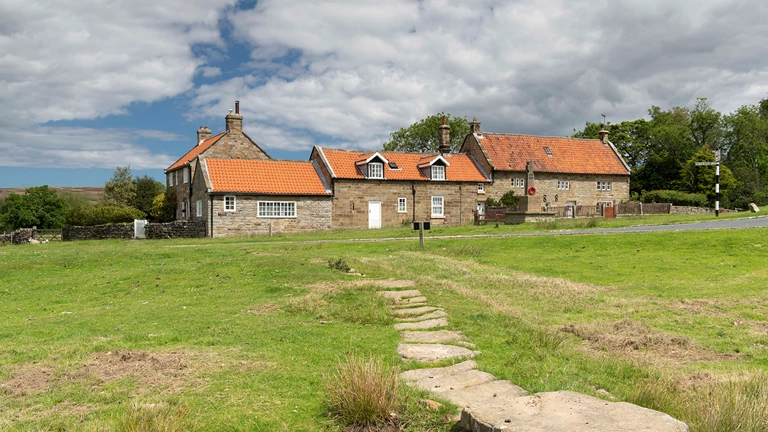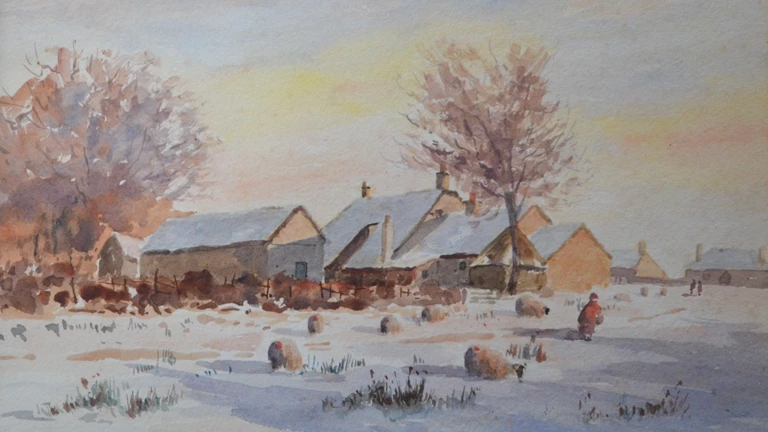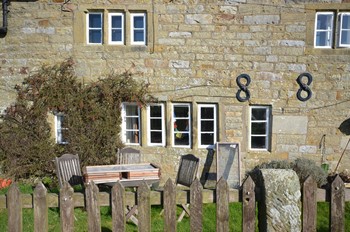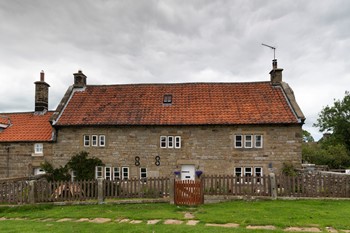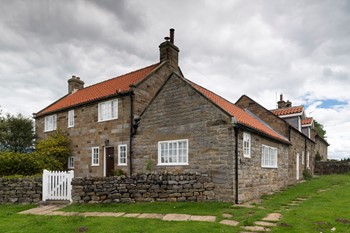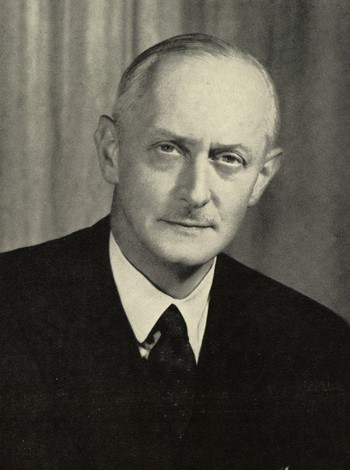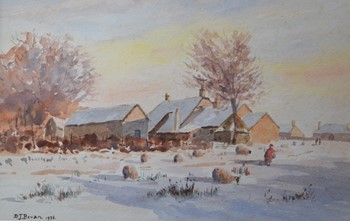Brereton Cottages
North York Moors, Oliver Sheldon and a famous farming community.
Due north of Pickering, the farming community of Goathland, high on the North York Moors, can trace its history back to the 12th century. Standing on the main crossroads of the village, the Brereton Cottages overlook the historic green and World War II memorial.
Today, the complex of stone cottages comprises three adjoining properties, although originally it was a single vernacular moorland farmstead of a house and byre (or cowshed) with an additional cowshed added later. Applied to only 5% of all listed buildings in the country, and less than 0.1% of all dwellings in the UK, Historic England Grade II* listed, these cottages have national significance.
Known as Brereton House, the main block was substantially remodelled in 1740. Commemorated by a date carved into the lintel above the main door, you'll also find the initials for the then owners John and Elizabeth Cockerill. Small square-cut mullion windows provide light at front and back and are said to be amongst the earliest examples of this uncommon construction. The mullion windows at the rear, however, are now mostly filled in and reflect an internal layout much altered over time.
The main part of the longhouse has two pairs of re-used crucks set in its external walls, whilst next door in the cottage a further pair are re-used. These are made from naturally curved timbers, creating the cruck ‘blade’. A single oak tree is riven or split in two to form an equally shaped A frame.
On the inside some interesting features survive, not least a fireplace with hearth joist and hearth window plus a ‘speer’ of heck post partition which forms the back for a small stone seat creating a cosy nook. Many of the internal doors and plank and ‘muntin’ partition walls have survived from the 1740 remodelling. A survey carried out in 1972 noted that part of a winnowing chamber, where chaff would be separated from grain, survived above the entrance passage.
In 1835 the steam railway came to Goathland threading its way east towards the port and seaside resort of Whitby. By 1865, a superior station was built at the bottom of the hill just outside the village, establishing Goathland as a popular beauty spot and stop-off for sightseers and walkers, many of whom visited the 70 foot Mallyan Spout waterfall.
The byre, next door to the main house, was remodelled in 1851 by tenants John and Martha Scarth who restored the building to create additional accommodation. The Scarths lived alone in the property and it’s possible they saw this as a way of generating income from the increasing amounts of tourists heading towards Yorkshire’s east coast by train. A new cowshed was then added at the western end of the complex, following, as Dr Dav Smith noted in his survey, “a common trend to slowly segregate the byre away from the domestic accommodation.”
In 1925 the Brereton properties and rear fields were purchased by JB Morrell as a holiday home for family, friends and fellow Directors at the Rowntree factory in York. Regular guests Oliver and Jean Sheldon converted the cowshed on the western end into a new holiday home for their own use in 1936. Adding a modern extension, they did this, according to Jean, using local materials available on site. Becoming known as Brereton Corner, the couple must have enjoyed the change because by the late 1940s they had moved there permanently, Oliver dying several years later in 1951.
Oliver Sheldon made his mark at a national and international level with the publication of his book The Philosophy of Management in 1931. His main premise being that whilst basic needs for workers and their management must be met, wider personal and community involvement was equally important. This approach was at odds with contemporary scholars like Fredrick Taylor who espoused the need for profit above all else. Sheldon’s view, however, found favour with his fellow Quaker colleagues at Rowntree, including JB Morrell.
Sheldon argued that industry was key to the shaping of society and management must work to higher standards than pure financial gain. Whilst ensuring their workers were paid a ‘living wage’, had decent working conditions and involvement in decision-making in the workplace, companies like Rowntree should encourage workers and Directors to be closely involved in community projects. Certainly the case for Sheldon, an early successful fund raising initiative saved the nationally important Evelyn collection of topographical views for York, managing in the process to outbid Yale University in America.
Sheldon also collaborated with JB Morrell to convert the old prison in York Castle into a museum filled with Dr Kirk’s collection of folk art in 1938. Founder of the York Georgian Society in 1939, he wrote: “The object of the Society is to take steps as are possible to ensure the care and preservation of Georgian buildings in York and neighbourhood, and to strengthen and develop public interest in Georgian art and architecture.” To preserve such buildings, he said, “or where they must pass, to retain a permanent record of them, is a duty we owe both to the genius of a great past era in architecture and to the standards of architectural taste in the future.”
The Society resolved to record and analyse all the York Georgian buildings, a project that pre-dated by some two decades a national initiative to provide a listing system for important buildings in the UK. The Georgian survey and analysis fed into this process for the City of York. Firm friends and long-time professional colleagues Oliver Sheldon’s interest in community and built heritage matched JB Morrell’s, both being founder members of York Civic Trust in 1946 and the Borthwick Institute for Archives in 1949; this project proving to be a critical element in the founding of the new University of York in 1963.
Oliver Sheldon’s legacy endures today through the creation of the Sheldon Memorial Trust, a charity which promotes and encourages education in history and the arts.
More recently, Goathland was chosen as the setting for the fictional village of Aidensfield, featured in the popular and long-running ITV series Heartbeat (1992-2010). Many fans continue to make the pilgrimage to see the filming locations. A popular stop on the 840 Coastliner bus route that runs from Leeds to Whitby via York, one of the UK’s most scenic bus routes, a summer timetable of steam trains run by the North York Moors Railway continues to take tourists out towards Whitby and the coast.
Loved by JB Morrell, Oliver Sheldon and their families, today many stop off to visit Goathland’s village stores and tea shops, whilst taking in the beauty of the surrounding North York Moors National Park.
Discover more about the Brereton Cottages
Brereton Cottages
Goathland
Whitby
YO22 5JR
Historic England Grade II* listed buildings
Why are the Brereton Cottages significant?
The site demonstrates medium-to-high evidential, historical and aesthetic heritage values. Despite the extent of change, Brereton House and Cottage are therefore of high special architectural and historic interest. The whole site (Brereton House, Brereton Cottage and Brereton Corner) are collectively of national significance, as an important surviving example of a vernacular moorland longhouse, demonstrating the archetypal development of their linear form on the North York Moors.
Dr Dav Smith

